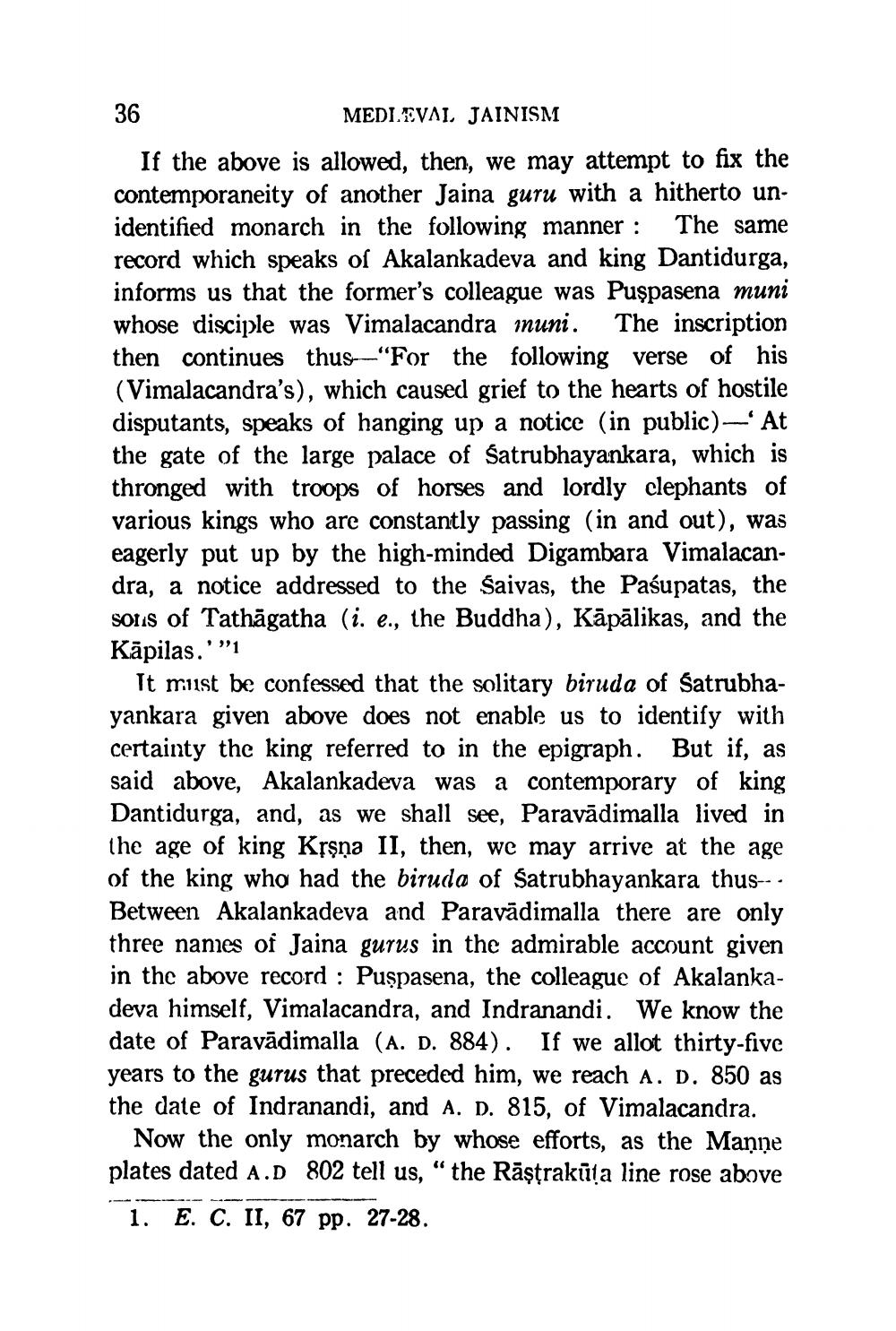________________
36
MEDIEVAL JAINISM If the above is allowed, then, we may attempt to fix the contemporaneity of another Jaina guru with a hitherto unidentified monarch in the following manner : The same record which speaks of Akalankadeva and king Dantidurga, informs us that the former's colleague was Puspasena muni whose disciple was Vimalacandra inuni. The inscription then continues thus-—"For the following verse of his (Vimalacandra's), which caused grief to the hearts of hostile disputants, speaks of hanging up a notice (in public) — At the gate of the large palace of Satrubhayankara, which is thronged with troops of horses and lordly clephants of various kings who are constantly passing (in and out), was eagerly put up by the high-minded Digambara Vimalacandra, a notice addressed to the Saivas, the Pasupatas, the sous of Tathāgatha (i. e., the Buddha), Kāpālikas, and the Kāpilas.'"1
It must be confessed that the solitary biruda of Satrubhayankara given above does not enable us to identify with certainty the king referred to in the epigraph. But if, as said above, Akalankadeva was a contemporary of king Dantidurga, and, as we shall see, Paravādimalla lived in the age of king Krşņa II, then, we may arrive at the age of the king who had the biruda of Satrubhayankara thus .. Between Akalankadeva and Paravādimalla there are only three nanies of Jaina gurus in the admirable account given in the above record : Puspasena, the colleague of Akalankadeva himself, Vimalacandra, and Indranandi. We know the date of Paravādimalla (A. D. 884). If we allot thirty-five years to the gurus that preceded him, we reach a. D. 850 as the date of Indranandi, and A. D. 815, of Vimalacandra.
Now the only monarch by whose efforts, as the Manne plates dated A.D 802 tell us, "the Rāştrakūta line rose above
1. E. C. II, 67 pp. 27-28.




